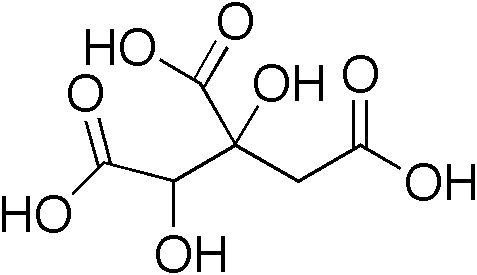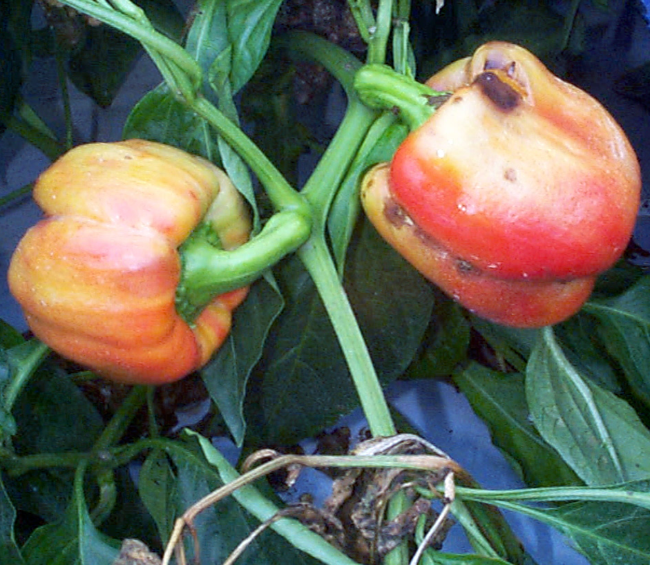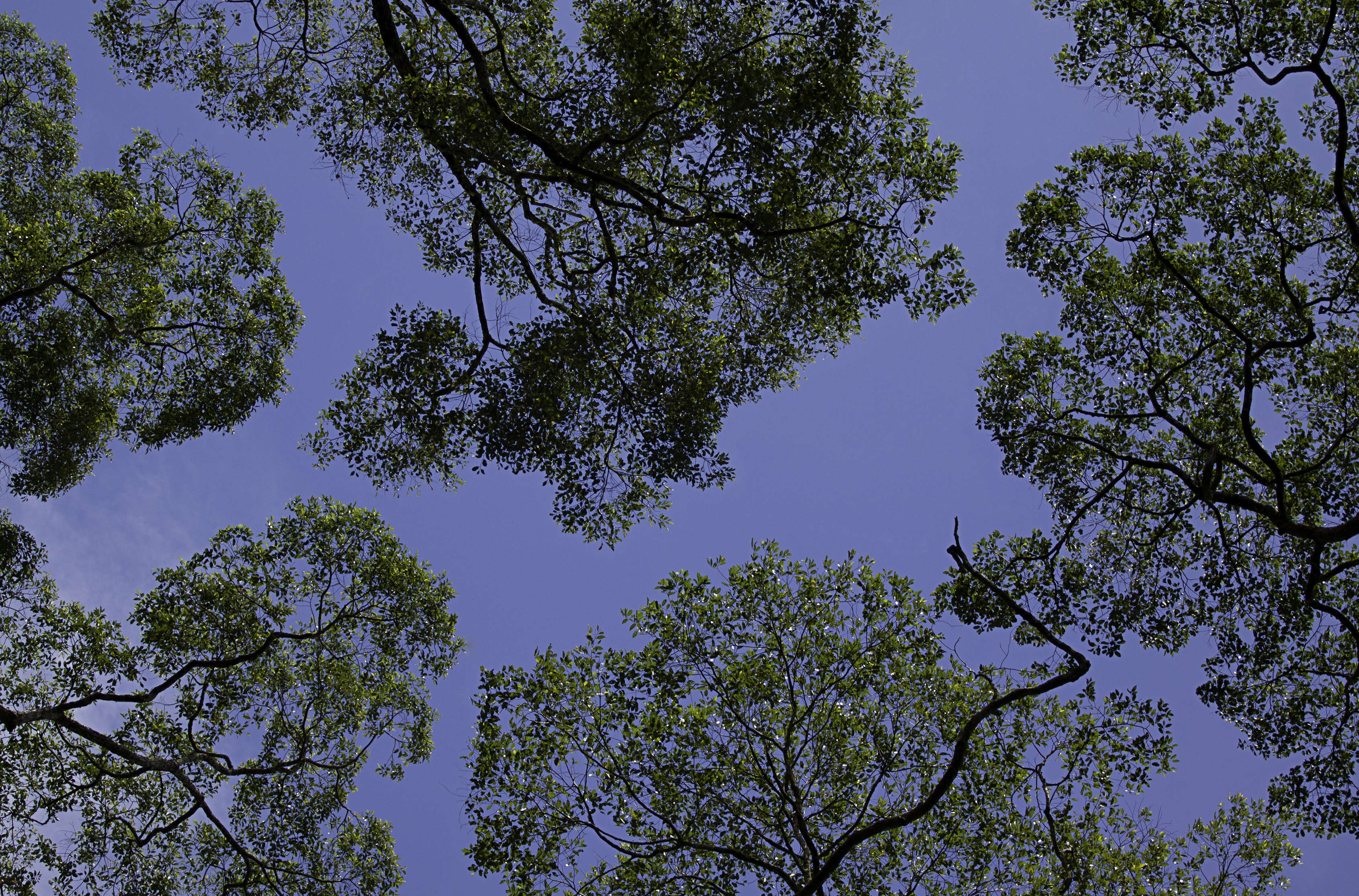|
Garcinia Mangostana
Mangosteen (''Garcinia mangostana''), also known as the purple mangosteen, is a tropical evergreen tree with edible fruit native to Island Southeast Asia, from the Malay Peninsula to Borneo. It has been cultivated extensively in tropical Asia since ancient times. It is grown mainly in Southeast Asia, southwest India and other tropical areas such as Colombia, Puerto Rico and Florida, where the tree has been introduced. The tree grows from tall. The fruit of the mangosteen is sweet and tangy, juicy, somewhat fibrous, with fluid-filled vesicles ( like the flesh of citrus fruits), with an inedible, deep reddish-purple colored rind (exocarp) when ripe. In each fruit, the fragrant edible flesh that surrounds each seed is botanically endocarp, i.e., the inner layer of the ovary.Mabberley, D.J. 1997. The plant book: A portable dictionary of the vascular plants. Cambridge University Press, Cambridge. The seeds are of similar size and shape to almonds. Genus ''Garcinia'' also contains ... [...More Info...] [...Related Items...] OR: [Wikipedia] [Google] [Baidu] |
Garcinia
''Garcinia'' is a genus of flowering plants in the family (biology), family Clusiaceae native to the Sundaland bioregion of Asia, America, Australia, tropical and southern Africa, and Polynesia. The number of species is disputed; Plants of the World Online (POWO) recognise up to 400. Commonly, the plants in this genus are called saptrees, mangosteens (which may also refer specifically to ''Garcinia mangostana''), or garcinias, and is one of several plants known as by the name "monkey fruit". The genus is named after French botanist Laurent Garcin (1683–1751). Trees of many species from this genus tend to grow deep in forested areas where other plants grow nearby. They are threatened by habitat destruction, and at least one species, ''Garcinia cadelliana, G. cadelliana'', from South Andaman Island, is almost or even completely extinct already. Description ''Garcinia'' species are evergreen trees and shrubs, dioecious and in several cases apomictic. Among neotropical ''Garcini ... [...More Info...] [...Related Items...] OR: [Wikipedia] [Google] [Baidu] |
Button Mangosteen
''Garcinia prainiana'', known as the button mangosteen or ''cherapu'' is a species of flowering plant in the family ''Clusiaceae''. Its fruit has a flavor similar to, but distinct from, its cousin, the purple mangosteen, with an interesting taste some have compared to a tangerine, but unlike its cousin it has a tissue-thin skin rather than a hard rind, making it much easier to eat out-of-hand. Also unlike the purple mangosteen, it can be grown in a container. The fruit is cultivated in Southeast Asia, by a few backyard growers in South Florida, and at the Whitman Tropical Fruit Pavilion at Florida's Fairchild Tropical Botanic Garden. It is a native of Malaysia and Thailand Thailand, officially the Kingdom of Thailand and historically known as Siam (the official name until 1939), is a country in Southeast Asia on the Mainland Southeast Asia, Indochinese Peninsula. With a population of almost 66 million, it spa .... The tree is small or medium-sized. It was featured in Mal ... [...More Info...] [...Related Items...] OR: [Wikipedia] [Google] [Baidu] |
Chlorophyll
Chlorophyll is any of several related green pigments found in cyanobacteria and in the chloroplasts of algae and plants. Its name is derived from the Greek words (, "pale green") and (, "leaf"). Chlorophyll allows plants to absorb energy from light. Those pigments are involved in oxygenic photosynthesis, as opposed to bacteriochlorophylls, related molecules found only in bacteria and involved in anoxygenic photosynthesis. Chlorophylls absorb light most strongly in the blue portion of the electromagnetic spectrum as well as the red portion. Conversely, it is a poor absorber of green and near-green portions of the spectrum. Hence chlorophyll-containing tissues appear green because green light, diffusively reflected by structures like cell walls, is less absorbed. Two types of chlorophyll exist in the photosystems of green plants: chlorophyll ''a'' and ''b''. History Chlorophyll was first isolated and named by Joseph Bienaimé Caventou and Pierre Joseph Pelletier in ... [...More Info...] [...Related Items...] OR: [Wikipedia] [Google] [Baidu] |
Plant Virus
Plant viruses are viruses that have the potential to affect plants. Like all other viruses, plant viruses are obligate intracellular parasites that do not have the molecular machinery to replicate without a host. Plant viruses can be pathogenic to vascular plants ("higher plants"). Many plant viruses are rod-shaped, with protein discs forming a tube surrounding the viral genome; isometric particles are another common structure. They rarely have an envelope. The great majority have an RNA genome, which is usually small and single stranded (ss), but some viruses have double-stranded (ds) RNA, ssDNA or dsDNA genomes. Although plant viruses are not as well understood as their animal counterparts, one plant virus has become very recognizable: '' tobacco mosaic virus'' (TMV), the first virus to be discovered. This and other viruses cause an estimated US$60 billion loss in crop yields worldwide each year. Plant viruses are grouped into 73 genera and 49 families. However, these fi ... [...More Info...] [...Related Items...] OR: [Wikipedia] [Google] [Baidu] |
Infestation
Infestation is the state of being invaded or overrun by pests or parasites. It can also refer to the actual organisms living on or within a host. Terminology In general, the term "infestation" refers to parasitic diseases caused by animals such as arthropods (i.e. mites, ticks, and lice) and worms, but excluding (except) conditions caused by protozoa, fungi, bacteria, and viruses, which are called infections. External and internal Infestations can be classified as either external or internal with regards to the parasites' location in relation to the host. External or ectoparasitic infestation is a condition in which organisms live primarily on the surface of the host (though porocephaliasis can penetrate viscerally) and includes those involving mites, ticks, head lice and bed bugs. An internal (or endoparasitic) infestation is a condition in which organisms live within the host and includes those involving worms (though swimmer's itch stays near the surface). Somet ... [...More Info...] [...Related Items...] OR: [Wikipedia] [Google] [Baidu] |
Astringency
An astringent (sometimes called adstringent) is a chemical that shrinks or constricts body tissues. The word derives from the Latin '' adstringere'', which means "to bind fast". Astringency, the dry, puckering or numbing mouthfeel caused by the tannins in unripe fruits, lets the fruit mature by deterring eating. Tannins, being a kind of polyphenol, bind salivary proteins and make them precipitate and aggregate, producing a rough, "sandpapery", or dry sensation in the mouth. Smoking tobacco is also reported to have an astringent effect. In a scientific study, astringency was still detectable by subjects who had local anesthesia applied to their taste nerves, but not when both these and the trigeminal nerves were disabled. Uses In medicine, astringents cause constriction or contraction of mucous membranes and exposed tissues and are often used internally to reduce discharge of blood serum and mucous secretions. This can happen with a sore throat, hemorrhages, diarrhea, and p ... [...More Info...] [...Related Items...] OR: [Wikipedia] [Google] [Baidu] |
Tannin
Tannins (or tannoids) are a class of astringent, polyphenolic biomolecules that bind to and Precipitation (chemistry), precipitate proteins and various other organic compounds including amino acids and alkaloids. The term ''tannin'' is widely applied to any large polyphenolic compound containing sufficient hydroxyls and other suitable groups (such as carboxyls) to form strong complexes with various macromolecules. The term ''tannin'' (from scientific French ''tannin'', from French ''tan'' "crushed oak bark", ''tanner'' "to tan", cognate with English language, English ''tanning'', Medieval Latin ''tannare'', from Proto-Celtic ''*tannos'' "oak") refers to the abundance of these compounds in oak Bark (botany), bark, which was used in Tanning (leather), tanning animal Hide (skin), hides into leather. The tannin compounds are widely distributed in many species of plants, where they play a role in protection from predation (acting as pesticides) and might help in regulating plant ... [...More Info...] [...Related Items...] OR: [Wikipedia] [Google] [Baidu] |
Xanthonoid
A xanthonoid is a chemical natural phenolic compound formed from the xanthone backbone. Many members of the Clusiaceae The Clusiaceae or Guttiferae Juss. (1789) (''nom. alt. et cons.'' = alternative and valid name) are a family (biology), family of plants including 13 genera and ca 750 species. Several former members of Clusiacae are now placed in Calophyllaceae ... contain xanthonoids. Xanthonoid biosynthesis in cell cultures of '' Hypericum androsaemum'' involves the presence of a benzophenone synthase condensing a molecule of benzoyl-CoA with three malonyl-CoA yielding to 2,4,6-trihydroxybenzophenone. This intermediate is subsequently converted by a benzophenone 3′-hydroxylase, a cytochrome P450 monooxygenase, leading to the formation of 2,3′,4,6-tetrahydroxybenzophenone. Some examples are tomentonone, zeyloxanthonone and calozeyloxanthone isolated from the bark of '' Calophyllum tomentosum'', apetalinone A, B, C and D from '' Calophyllum apetalum'', gaud ... [...More Info...] [...Related Items...] OR: [Wikipedia] [Google] [Baidu] |
Ripening
Ripening is a process in fruits that causes them to become more palatable. In general, fruit becomes sweeter, less green, and softer as it ripens. Even though the acidity of fruit increases as it ripens, the higher acidity level does not make the fruit seem tarter. This effect is attributed to the Brix-Acid Ratio. Climacteric fruits ripen after harvesting and so some fruits for market are picked green (e.g. bananas and tomatoes). Underripe fruits are also fibrous, not as juicy, and have tougher outer flesh than ripe fruits (see Mouth feel). Eating unripe fruit can sometimes lead to stomachache or stomach cramps, and ripeness affects the palatability of fruit. Science 1 Methylcyclopropene is used as a synthetic 127x127px, leftDeveloping fruits produce compounds like alkaloids and tannins. These compounds are antifeedants, meaning that they discourage animals who would eat them while they are still ripening. This mechanism is used to make sure that fruit is not ea ... [...More Info...] [...Related Items...] OR: [Wikipedia] [Google] [Baidu] |
Canopy (forest)
In biology, the canopy is the aboveground portion of a plant cropping or crop, formed by the collection of individual plant crowns. In forest ecology, the canopy is the upper layer or habitat zone, formed by mature tree crowns and including other biological organisms (epiphytes, lianas, arboreal animals, etc.). The communities that inhabit the canopy layer are thought to be involved in maintaining forest diversity, resilience, and functioning. Shade trees normally have a dense canopy that blocks light from lower growing plants. Early observations of canopies were made from the ground using binoculars or by examining fallen material. Researchers would sometimes erroneously rely on extrapolation by using more reachable samples taken from the understory. In some cases, they would use unconventional methods such as chairs suspended on vines or hot-air dirigibles, among others. Modern technology, including adapted mountaineering gear, has made canopy observation signific ... [...More Info...] [...Related Items...] OR: [Wikipedia] [Google] [Baidu] |
Agamospermy
In botany, apomixis is asexual development of seed or embryo without fertilization. However, other definitions include replacement of the seed by a plantlet or replacement of the flower by bulbils. Apomictically produced offspring are genetically identical to the parent plant, except in nonrecurrent apomixis. Its etymology is Greek for "away from" + "mixing". Normal asexual reproduction of plants, such as propagation from cuttings or leaves, has never been considered to be apomixis. In contrast to parthenocarpy, which involves seedless fruit formation without fertilization, apomictic fruits have viable seeds containing a proper embryo, with asexual origin. In flowering plants, the term "apomixis" is used in a restricted sense to mean agamospermy, i.e. clonal reproduction through seeds. Although agamospermy could theoretically occur in gymnosperms, it appears to be absent in that group. Apogamy is a related term that has had various meanings over time. In plants with in ... [...More Info...] [...Related Items...] OR: [Wikipedia] [Google] [Baidu] |
Fertilisation
Fertilisation or fertilization (see spelling differences), also known as generative fertilisation, syngamy and impregnation, is the fusion of gametes to give rise to a zygote and initiate its development into a new individual organism or offspring. While processes such as insemination or pollination, which happen before the fusion of gametes, are also sometimes informally referred to as fertilisation, these are technically separate processes. The cycle of fertilisation and development of new individuals is called sexual reproduction. During double fertilisation in angiosperms, the haploid male gamete combines with two haploid polar nuclei to form a triploid primary endosperm nucleus by the process of vegetative fertilisation. History In antiquity, Aristotle conceived the formation of new individuals through fusion of male and female fluids, with form and function emerging gradually, in a mode called by him as epigenetic. In 1784, Spallanzani established the need of in ... [...More Info...] [...Related Items...] OR: [Wikipedia] [Google] [Baidu] |






